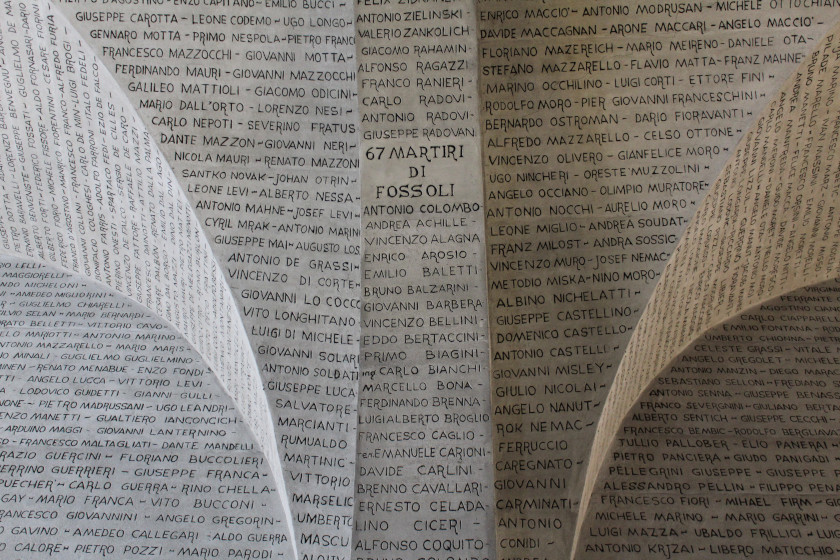Open Friday, Saturday, Sunday, and holidays: 10:00–13:00 | 15:00–19:00
On Thursday mornings, the Museum opens upon request at This email address is being protected from spambots. You need JavaScript enabled to view it.
Free admission on the first Sunday of the month, from September 19th to 21st, and September 26th and 27th
Special free openings:
FESTIVAL FILOSOFIA: Friday, September 19th and Saturday, September 20th from 10:00–23:00
Sunday, September 21st from 10:00–20:00
HERITAGE DAYS: September 26th and 27th from 10:00–13:00 | 15:00–19:00
Closures:
- May 20th, Patron Saint's Day
The Museum to the Deported was inaugurated in October 1973 in the fifteenth-century rooms on the ground floor of the Palace towards the fortified tower; it was designed by BBPR’s studio of Milan to commemorate the Nazi Holocaust victims and for the presence of a shelter and sorting camp in Fossoli, just a few kilometres from Carpi.
The visit develops through thirteen rooms characterized by a sober and basic architecture with grey plastered walls engraved with red coloured prisoners’ quotes from the Letters of members of the European Resistance sentenced to death.
In some rooms there are engraved graffiti reproducing drawings on deportation by great painters like Longoni, Picasso, Guttuso, Cagli and Léger.
The most traditional museum area is represented by few significant objects inside cases embedded to the floor, to underline once again the importance of the words on the walls.
In the external courtyard, as integral part of the tour, it is possible to see sixteen steles in reinforced concrete, six metres high, on which the names of European concentration and extermination camps have been carved. Red roses grow on those steles, placed in the courtyard in an apparent disorder, a symbol of the blood poured in the killing camps during the Second World War.
The itinerary concludes in the Hall of Names. Over 14000 names of Italian deported to Nazi camps have been carved on the walls. In addition to them, there are also the names of Anna Frank, as symbol of all the children died in camps, and Fossoli martyrs killed while trying to escape. In designing this hall, Ludovico di Belgioiso drew inspiration from a synagogue of Prague whose interior walls are covered with the names of the deported Czech Jews.




